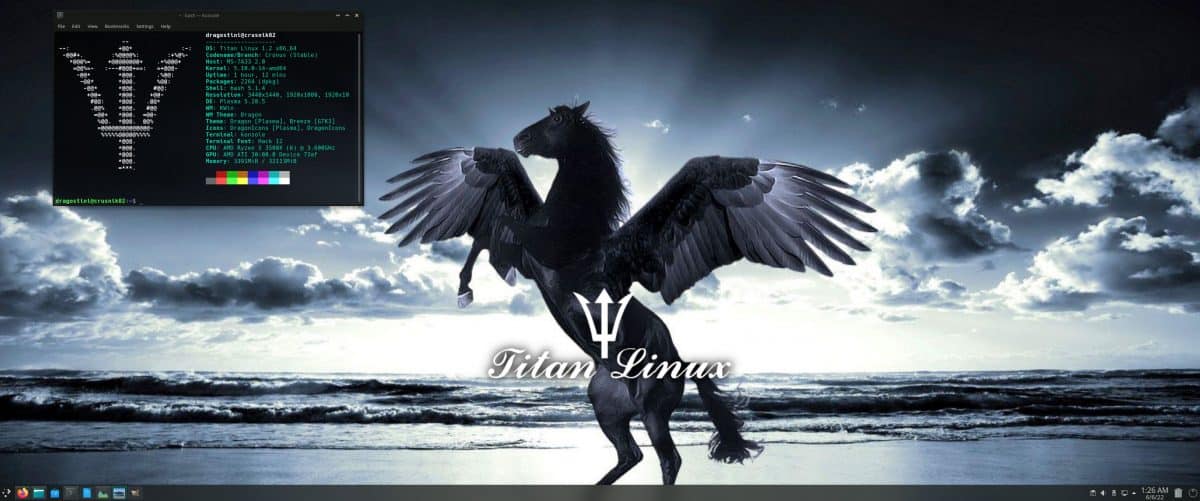I was talking with a friend of mine about Linux distributions, and he asked me if I had ever heard of Titan Linux, to which I replied I had not. He told me he had recently read an article about it, praising it for being a great customized version of Debian Stable...so, I had to try it out for myself!
When I got to the homepage for the site, I found it pleasant to look at and well organized, with the various download options easily noticeable. Getting my hands on the ISO was easy. I also loved the inclusion of their GitHub and GitLab linked right on the front page.
So, in a matter of minutes, I had my handy USB drive ready to go, and I was set to boot into the live environment.
My Specs:
- Ryzen 5 3500X
- 32GB DDR4 3200Mhz
- AMD Radeon 6900XT
- 2x 1080P Screens + 1x 21:9 1440P Screen
- Audio through DAC/Amp combo unit plugged in via USB-C
So, I booted into the live environment, but then got a lengthy phone call and stepped away from my PC. When I returned, I forgot I hadn’t installed yet, and started clicking around, exploring and testing things...and even on this 10 year old no-name little 8GB USB stick, the system flew so fast I didn’t notice until I saw the Installation icon on the desktop...oops.
Installation
Installation of Titan Linux uses the Calamares installation utility, not the one you’d usually find in Debian – and I think this is awesome. Calamares is my favourite OS installation utility to-date, and it worked just as well as it usually does for me, this time around. It was just a few moments to choose the drive I wanted, and to replace the existing Ubuntu installation that was there, and the installation started. I will say that installation took a few minutes longer than some other systems I’ve used in the last couple years; but it wasn’t too slow or anything, maybe 10-15 minutes at most installing onto this SSD.
Included Software and Features
When I was perusing the menu items of Titan Linux I was surprised at just how minimal it was, and it delighted me. Another interesting thing to note was that despite Titan Linux using KDE Plasma for its desktop environment, not all applications installed are the KDE tools you’d expect. For example, the image viewer is LXImage, from LXQT. However, I support these changes, as they looked completely in-line with the theme and style of Titan Linux and it felt very much like a custom setup that someone spent the time to actually figure out great choices for the system rather than just relying on defaults or old-faithfuls.
Another interesting and truly awesome feature of Titan Linux is the “Titan Toolbox” menu item. Inside are various utilities and tools that I am certain many will find useful. Some examples are:
- Button for restarting network service
- Button for clearing swap (first time I’ve seen this so easily available, and something more distributions should include out-of-the-box as a button, I think!)
- Application Terminator (turns your mouse into an application killing skull and crossbones. Click and POOF)
- “Extra Software” application that opens a terminal application with easy access to web-browsers, Office, Encrypted DVD Support, Hypervisors and AppImage launchers, all easy to install without needing to open the App store “Discover” included with the system.
- Titan Tweak Tool with the ability to modify the aggressiveness of your swap.
- Many, many others.
Performance
This system was blazing fast though used a little more resources than I expected – but barely anything still.
With Firefox open with three tabs (Ghacks, Google, Titan Linux homepage), LibreOffice Writer, LXImage open on blank, Dolphin open, and the System Monitor open, my CPU averaged 4-6% but with random spikes up to 12% fairly frequently, and I was using 3GB of RAM.
Final Thoughts
Overall, I am loving Titan Linux, and I think I may use it for a while. I haven’t used Debian in ages, and this custom setup with a nice mostly-KDE environment and some powerful tools created by the developers (there is only two, so kudos to them) has really impressed me, so I’m going to see how I like it as a daily-driver for some time.
NOW YOU: Have you ever used Titan Linux? What about Debian? Tell us your thoughts on them in the comments below!
Thank you for being a Ghacks reader. The post A Look at Titan Linux -- Customized Debian Stable appeared first on gHacks Technology News.

0 Commentaires